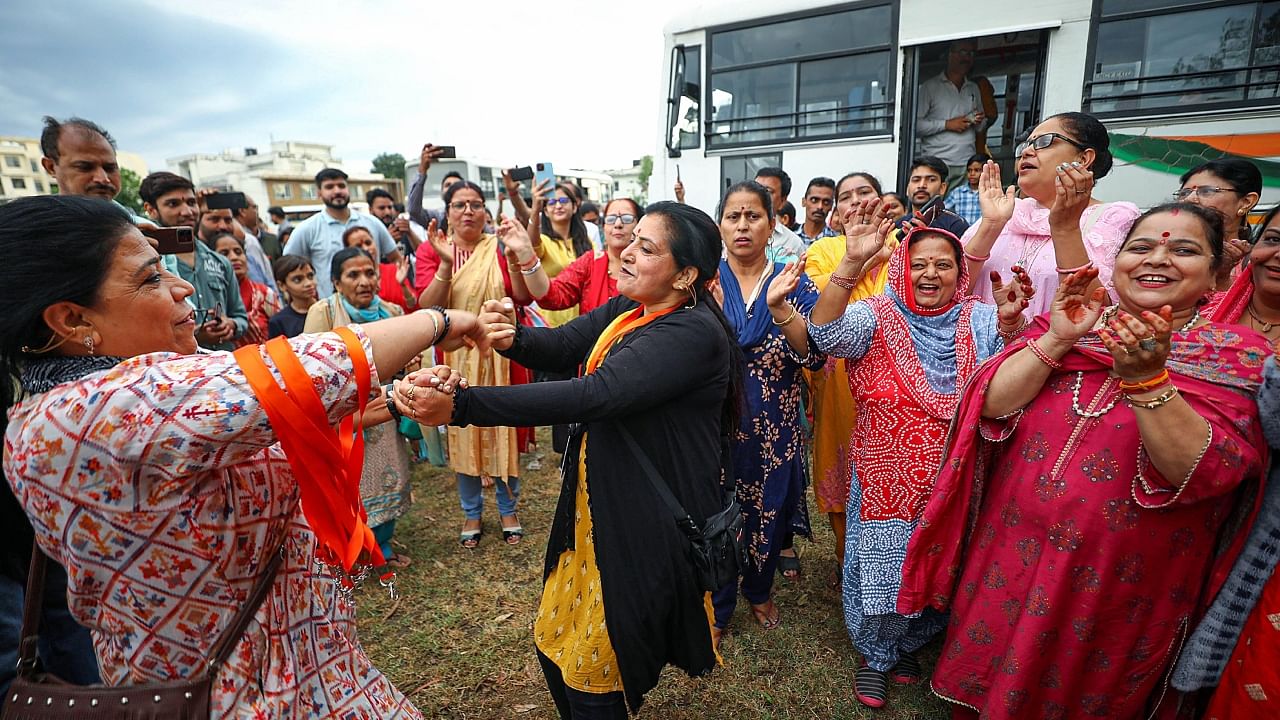
Amid the prevailing peace, a few thousand Kashmiri Pandit devotees gathered at Mata Kheer Bhawani temple shrine in central Kashmir’s Ganderbal district on Sunday to keep their tryst with the deity on the annual festival of Jyeshtha Ashtami.
Nestled in the shade of mammoth Chinars, Ragnya Devi temple in Tullamulla receives devotees, mostly Kashmiri Pandits, from different parts of the country, on Jyeshtha Ashtami, which falls on May 28 this year. Devotees offer milk, sugar and kheer to the goddess and light ghee lamps around the spring in the evening.
Upholding the centuries old tradition of brotherhood, Muslim residents of this town offer milk in earthen pots to the devotees on their arrival at the temple shrine.
This year, the rush of devotees was higher than in 2022, when targeted killings of minority community members had created a wave of fear. The devotees were enthusiastic and seemed happy to be visiting the place.
“I am glad to see young boys, both Muslims and Hindus, making arrangements for the devotees. We were welcomed with garlands by the locals,” Anil Raina, a devotee, who had come from Delhi, told DH.
Praising the efforts of locals in making the festival a success, he said, “Like Amarnathji yatra, local Muslims leave no stone unturned to make arrangements for devotees at Mata Kheer Bhawani mela. This is the real Kashmiryat for which Kashmir is known worldwide.”
Around 55,000 Pandit families left their ancestral homes in 1990 and migrated to Jammu and other parts of the country when a bloody insurgency broke out in Kashmir in 1989. Before their migration, Pandits used to visit the temple once in a month for conducting ‘havan’ and ‘puja.’ Now, it is held on Jyeshtha Ashtami once in a year.
After the annual Amarnath yatra, the Mela Kheer Bhawani is the largest gathering of Hindus in Kashmir and is considered very auspicious. It is a shining example of communal harmony and brotherhood, and over the years, the mela has served as a beacon of hope and solidarity.
The devotees believe the colour of the spring water flowing under the temple hints at the situation in Kashmir. While most of the colours do not have any particular significance, black or darkish colour of the water is believed to be an indication of inauspicious times for Kashmir.
Some people claim to have observed a murky tinge to the water just before the assassination of then Prime Minister Indira Gandhi and the eruption of militancy in 1989 in the Valley.
The Temple is said to be constructed by Maharaja Pratap Singh in 1912. The Temple complex is an archaeologically important site and past excavations near the temple site have unearthed ancient stone statues, believed to be of the Hindu Period.